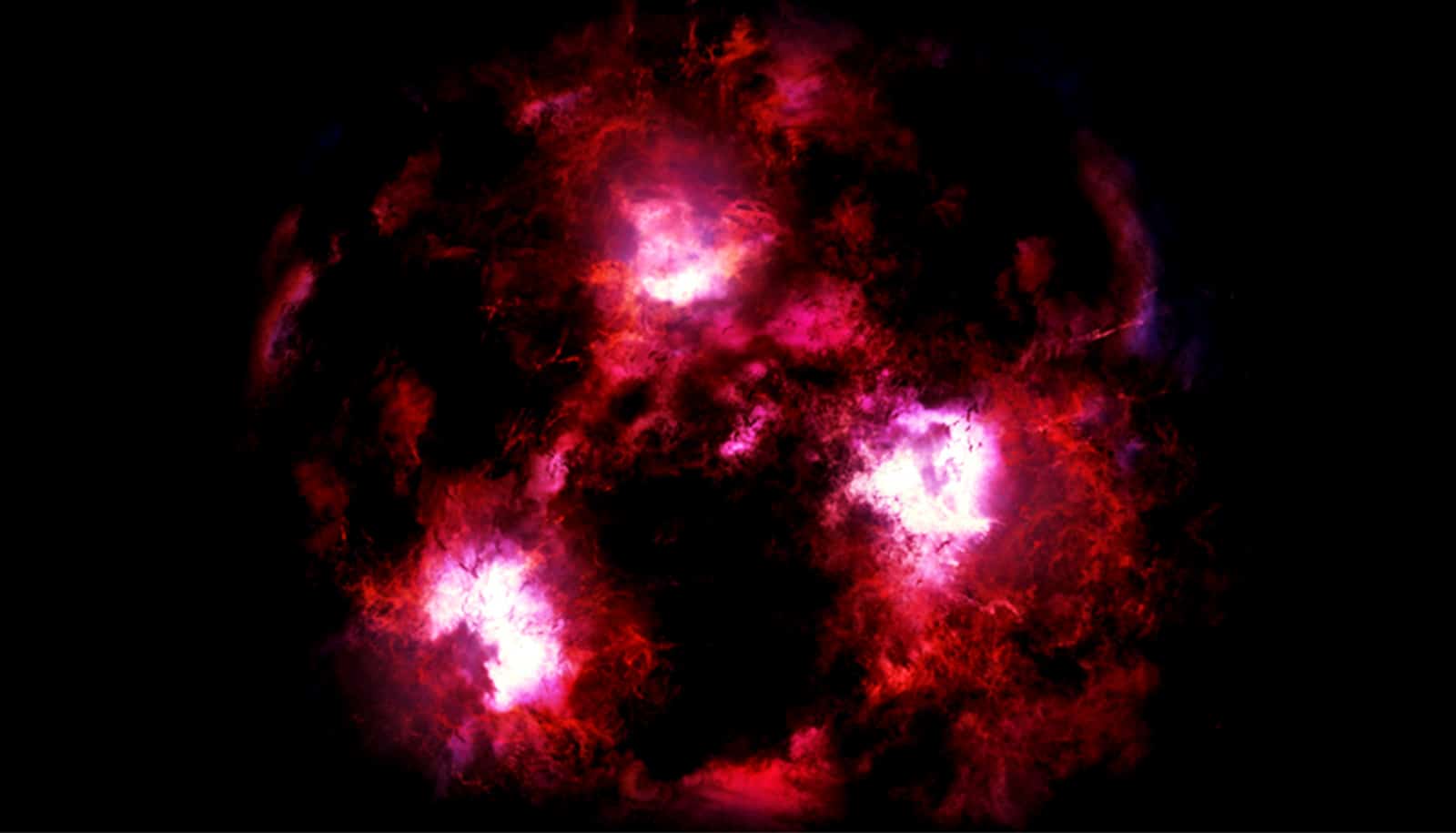
The signal detected by the team was emitted from this galaxy when the universe was only 4.9 billion years old, allowing the researchers to glimpse into the secrets of the early universe. (Credit: Benjamin Muntz/Unsplash )
Team grabs radio signal from most distant galaxy yet
Researchers have captured a radio signal from the most distant galaxy so far, allowing a peek into the secrets of the early universe.
Astronomers have captured a radio signal from a distant galaxy at a specific wavelength known as the 21 cm line.
With the help of the Giant Metrewave Radio Telescope in India, this is the first time this type of radio signal has been detected at such a large distance.
How do stars form in distant galaxies? Astronomers have long been trying to answer this question by detecting radio signals emitted by nearby galaxies. However, these signals become weaker the further away a galaxy is from Earth, making it difficult for current radio telescopes to pick up.
“A galaxy emits different kinds of radio signals. Until now, it’s only been possible to capture this particular signal from a galaxy nearby, limiting our knowledge to those galaxies closer to Earth,” says Arnab Chakraborty, a postdoctoral researcher at McGill University under the supervision of Matt Dobbs, a professor in the physics department.
“But thanks to the help of a naturally occurring phenomenon called gravitational lensing, we can capture a faint signal from a record-breaking distance. This will help us understand the composition of galaxies at much greater distances from Earth.”
“It’s the equivalent to a look-back in time of 8.8 billion years.”
For the first time, the researchers were able to detect the signal from a distant star-forming galaxy known as SDSSJ0826+5630 and measure its gas composition. The researchers observed the atomic mass of the gas content of this particular galaxy is almost twice the mass of the stars visible to us.
The signal the team detected was emitted from this galaxy when the universe was only 4.9 billion years old, allowing the researchers to glimpse into the secrets of the early universe.
“It’s the equivalent to a look-back in time of 8.8 billion years,” says Chakraborty.
“Gravitational lensing magnifies the signal coming from a distant object to help us peer into the early universe. In this specific case, the signal is bent by the presence of another massive body, another galaxy, between the target and the observer.
“This effectively results in the magnification of the signal by a factor of 30, allowing the telescope to pick it up,” says coauthor Nirupam Roy, an associate professor in the physics department at the Indian Institute of Science.
According to the researchers, these results demonstrate the feasibility of observing faraway galaxies in similar situations with gravitational lensing . It also opens exciting new opportunities for probing the cosmic evolution of stars and galaxies with existing low-frequency radio telescopes.
The study appears in the Monthly Notices of the Royal Astronomical Society .
The Giant Metrewave Radio Telescope was built and is operated by NCRA-TIFR. The research was funded by McGill University and the Indian Institute of Science.
Source: McGill University
The post Team grabs radio signal from most distant galaxy yet appeared first on Futurity .
Share this article:
This article uses material from the Futurity article, and is licenced under a CC BY-SA 4.0 International License. Images, videos and audio are available under their respective licenses.
Related Articles:
Webb Telescope reveals super early Milky Way-like galaxies
Jan. 5, 2023 • futurityGalaxy hunters find footprints from mysterious ‘monster’
Oct. 23, 2019 • futurityLinks/images:
- https://www.futurity.org/star-forming-region-milky-way-2036452/
- https://www.futurity.org/gravitational-lensing-galaxies-1168132-2/
- https://doi.org/10.1093/mnras/stac3696
- https://www.mcgill.ca/newsroom/channels/news/astronomers-capture-radio-signal-distant-galaxy-344925
- https://www.futurity.org/distant-galaxy-space-telescopes-2858682-2/
- https://www.futurity.org


